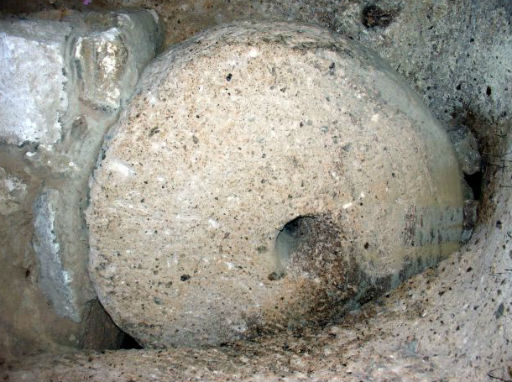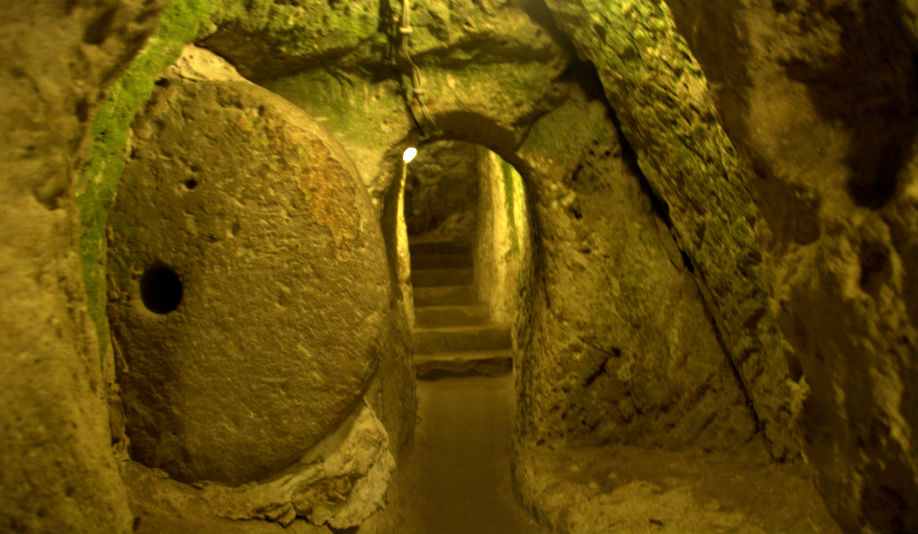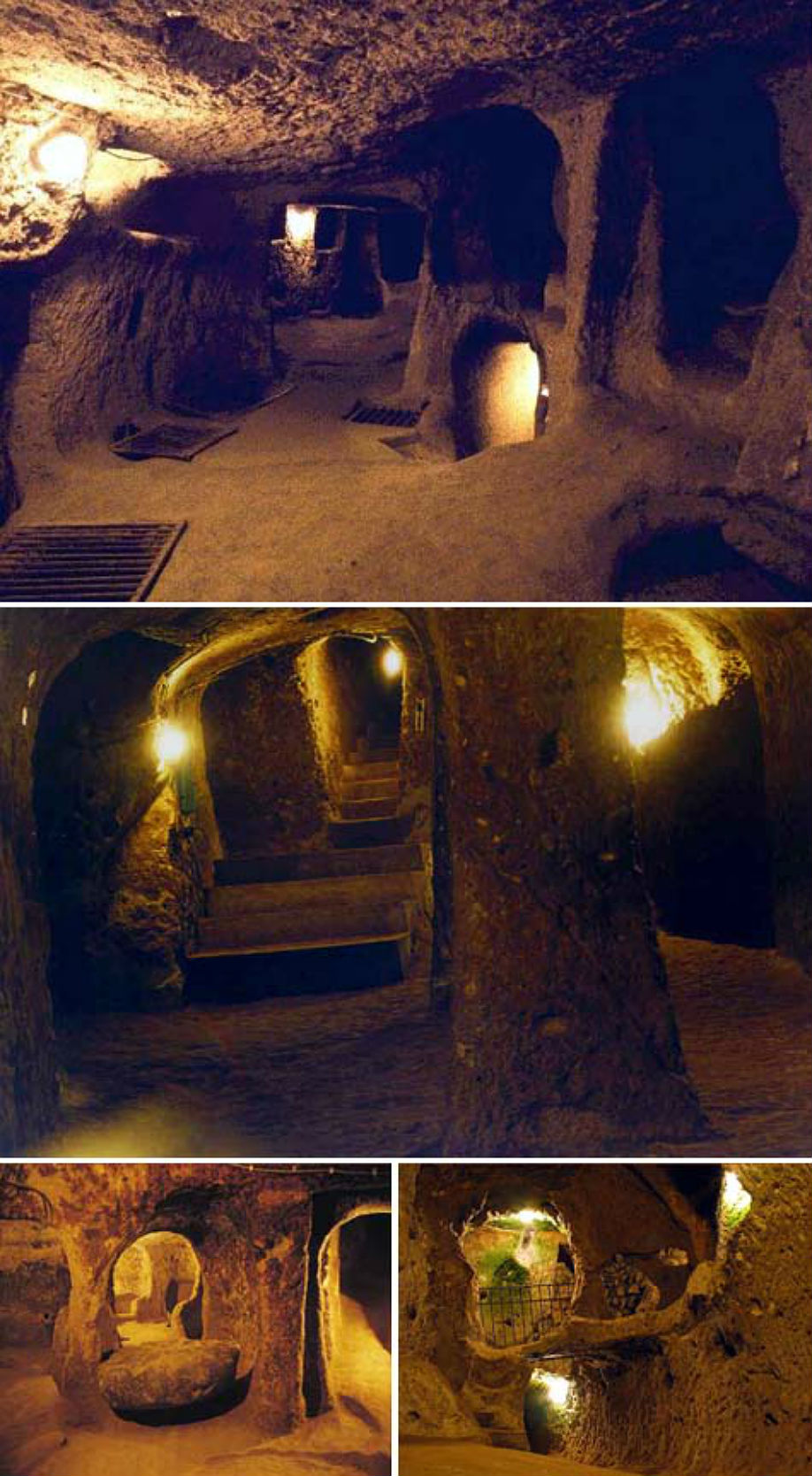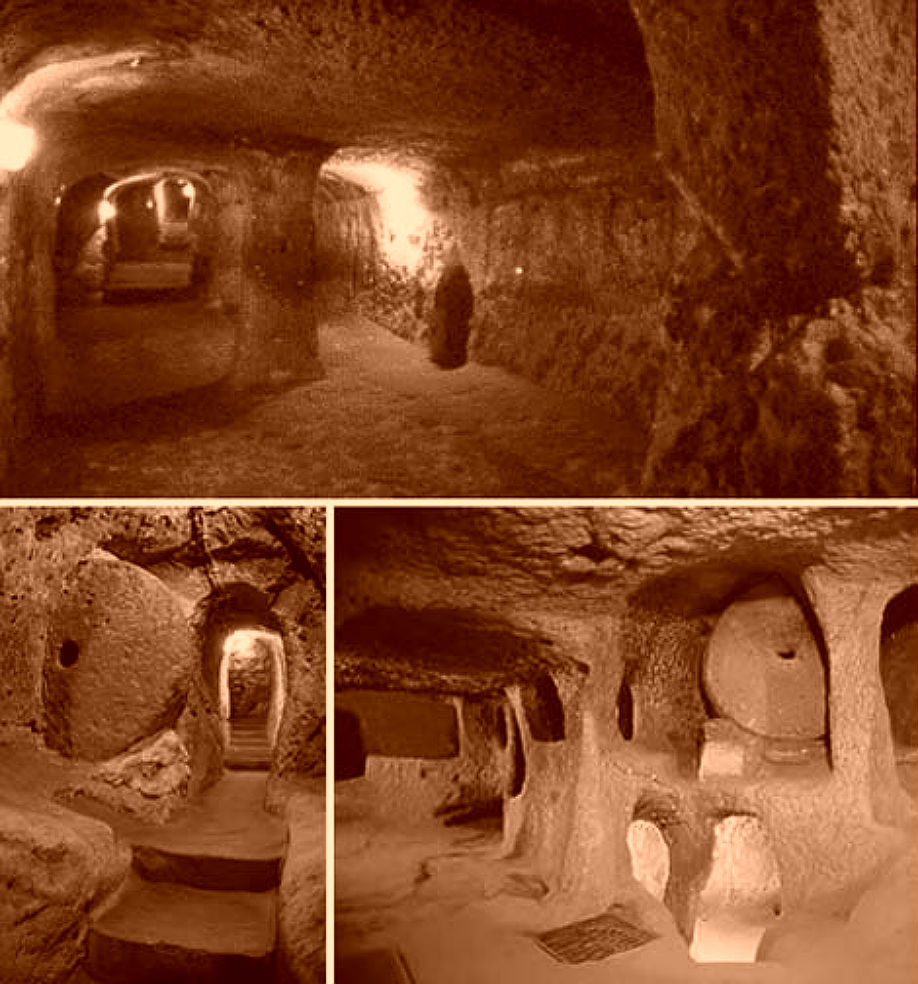Derinkuyu Underground City is an ancient multi-level underground city of the Median Empire in the Derinkuyu district in Nevşehir Province, Turkey.
Extending to a depth of approximately 60 m, it was large enough to shelter approximately 20,000 people together with their livestock and food stores.
It is the largest excavated underground city in Turkey and is one of several underground complexes found across Cappadocia.

One of the heavy stone doors. They have a height of 1–1,5 m, 30–50 cm in width and weigh 200–500 kg. The hole in the centre can be used to open or close the millstone, or to see who is outside.
It was opened to visitors in 1969 and to date, about half of the underground city is accessible to tourists. The underground city at Derinkuyu could be closed from the inside with large stone doors. Each floor could be closed off separately.
The city could accommodate up to 20,000 people and had all the usual amenities found in other underground complexes across Cappadocia, such as wine and oil presses, stables, cellars, storage rooms, refectories, and chapels. Unique to the Derinkuyu complex and located on the second floor is a spacious room with a barrel vaulted ceiling. It has been reported that this room was used as a religious school and the rooms to the left were studies.
Between the third and fourth levels is a vertical staircase. This passage way leads to a cruciform church on the lowest (fifth) level.
The large 55 m ventilation shaft appears to have been used as a well. The shaft also provided water to both the villagers above and, if the outside world was not accessible, to those in hiding.
History
First built in the soft volcanic rock of the Cappadocia region, possibly by the Phrygians in the 8th–7th centuries B.C according to the Turkish Department of Culture, the underground city at Derinkuyu may have been enlarged in the Byzantine era. During the Persian Achaemenid empire the city was used as a refugee settlement. There are references to underground refugee settlements built by the Persian king Yima in the second chapter of the Zoroastrian book Vendidad. Therefore many scholars believe that the city may have been built by the Persians. The city was connected with other underground cities through miles of tunnels.
Some artifacts discovered in these underground settlements belong to the Middle Byzantine Period, between the 5th and the 10th centuries A.D. It is speculated that the number of underground settlements, generally used for taking refuge and for religious purposes, increased during this era.
Derinkuyu Underground City, Cappadocia,





Once you understood the old way of living then you're about to consider more of the same. But it worths your time, if not for pictures!
Loved the shape & rock formation – breath taking!!
Wonderful experience seeing all these unusual shapped dwellings carved out from the rocks. A must see.
I was completely impressed with the ingenuity of the people who made these dwelling especially when you realize you are only in a very small part of it and they go down several stories more
it's unbelievable place, make such place in those time where fits 20 000 person with their horses?
Deepest, and I would say broader than Kaymakli, nice example of undergroudn city. It's origins date from Hetits (2000 BC)
An interesting experience but not always an easy place to visit especially if you do not enjoy confined spaces (claustrophobia). Some connecting tunnels are low and difficult to traverse especially if there is a crowd and people are trying to escape from a low-roofed tunnel. Interesting experience but would never do it again.
If you have more than two days in the Cappadocia region, I recommend stopping at Derinkuyu. We didn't use a guide for our entire tour due to the cost, but for a short time we were accompanied by a museum worker with excellent English who gave some great insights into what the different areas were used for.
This Underground City was absolutely incredible and amazing. It is something not be be missed.
Have never been into anything like this before… we went atleast 3 to 4 floors below the ground.. and there are still a lot more floors below… Itz really crazy how people built these during ancient times with just basic tools to work with.